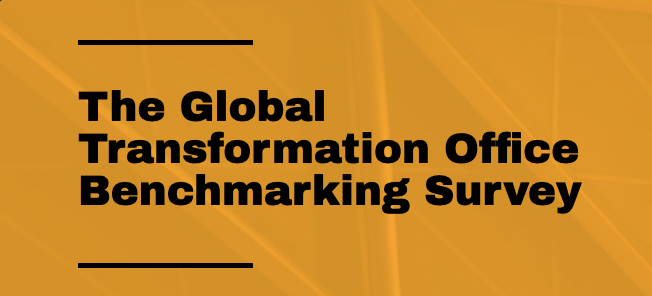Findings from the 2021 Global Transformation Benchmarking Survey
Introduction
In what may be a global first of its kind, Shibumi recently sponsored a benchmarking survey of the Strategy and Transformation Office. Traditionally the domain of the Project Management Office, or PMO, the Strategy and Transformation Office plays an increasingly prominent role in enabling Fortune 5000 organizations to transform the way they operate.
Transformation excellence is the mastery of the ability to rapidly conceive transformation opportunities, to evaluate them in conjunction with the organization’s capabilities, and to manage them through to successful completion ensuring that expected benefits are delivered and objectives achieved. Being excellent at Transformation Excellence is a critical differentiator and a competitive advantage.
Shibumi invited senior executives within 5000+ employee organizations from around the world to participate in the inaugural Transformation Excellence benchmarking survey. The data provided by the respondents shone a light on the challenges of transforming enterprise organizations as well as the characteristics of successful transformation offices.
Transformation and Strategy Office Leaders Come from Diverse Backgrounds
Respondents came from a variety of job descriptions including Chief Transformation Officers, VP’s of Strategy, and Transformation and Project Management Officers, and came to their current roles via a multitude of pathways, most notably Finance, Operations, and, rather unsurprisingly, Project Management roles. What was interesting and a little surprising was the breadth of pathways from which transformation leaders had come, and the diversity in reporting lines.

Less than a Third of Companies are Achieving Transformation Excellence
The benchmarking survey asked respondents to both self-evaluate the transformation excellence of their own organization, as well as report on the characteristics of their Strategy & Transformation office. The survey aimed to identify both the current level of transformation excellence as well as to identify correlations between characteristics of the Strategy & Transformation Office and success.
Overall, the average transformation excellence score was 3.3/5 with less than 30% of respondents scoring their organization a 4 or 5. Notably, all of those in the highest categories of 4 or 5 reported the strongest scores in alignment between Program/Project/Product Investments and overall organizational strategic objectives indicating the close correlation of strategy alignment and Operational Excellence.

Organizations with Low Agility Report Lack of Technology to Support Transformation Excellence
Respondents were asked to self-score on the three critical capabilities of Visibility, Agility, and Alignment. Alignment was the highest of any of the self-scoring questions with 3.7/5. Those organizations who scored themselves a 4 or 5 out of 5 for Alignment, reported to 44 stakeholders per program on average, considerably higher (37.5% higher) than the overall benchmark of 32 stakeholders per program.
57% of respondents scored themselves a 4 or 5 for being “focused on value”; a focus on Value-driven Decision Making through visibility to status and results had an overall score of 3.5 of 5.
Respondents, on average, scored their organizations the lowest when it came to agility. The average score was 3.0/5 with only 29.1% scoring above 3. All of those that scored their organization a 1 or 2 out of 5 for agility reported not having the tech stack to enable transformation excellence.
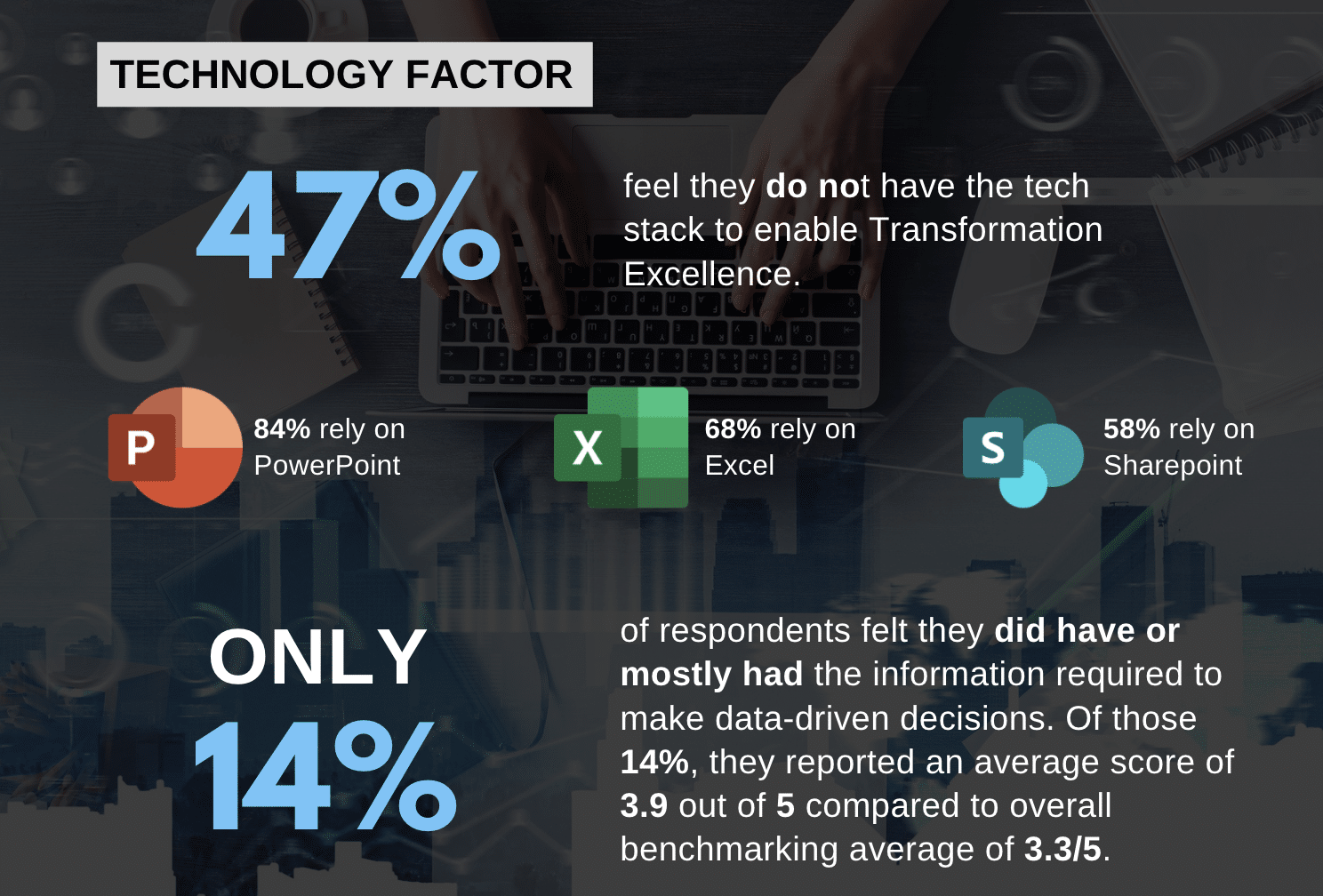
Nearly ¾ of Organizations Fail to Reap Expected Business Benefits from their Transformation Programs
The purpose of any transformation program is to realize the expected benefits from the investment. When it came to results, 74% of organizations reported that their transformation programs delivered less than 3/4 of the expected business benefits, an enormous failure rate.
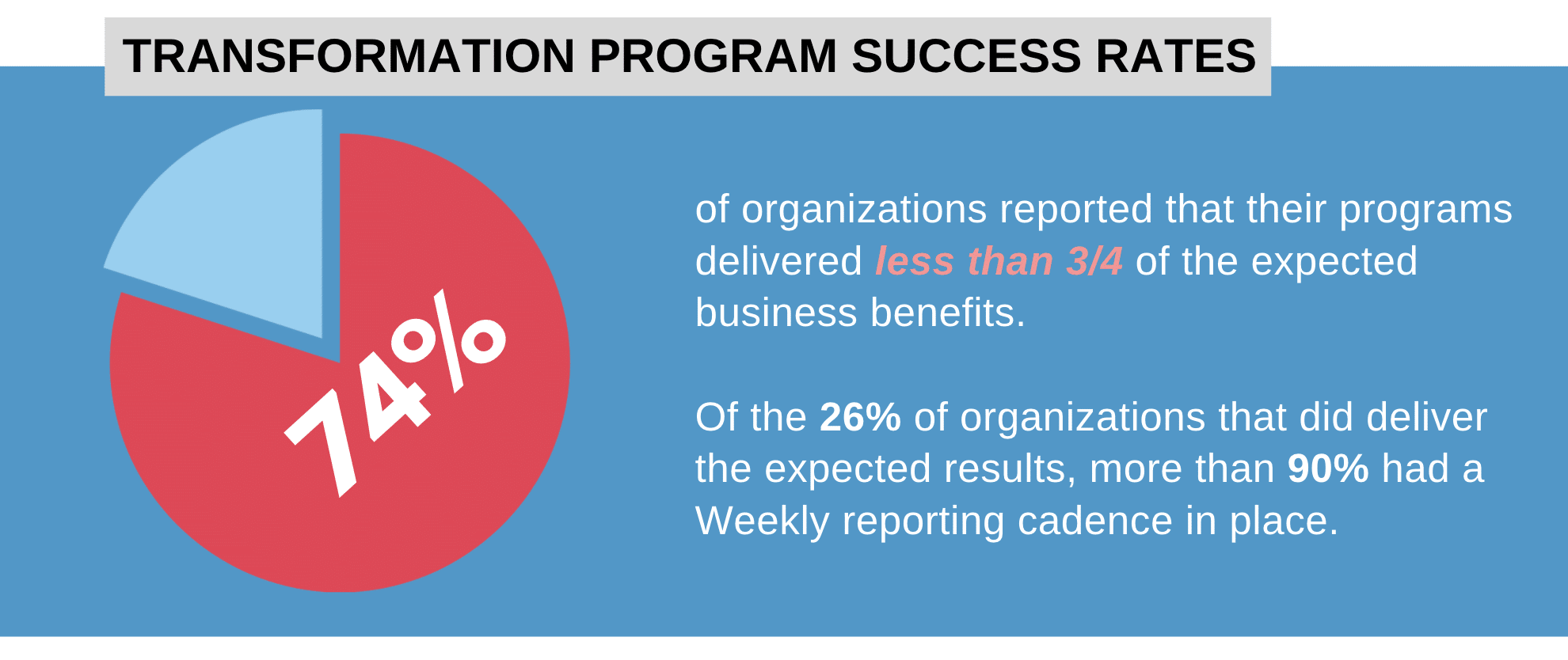
Of those organizations that delivered 75% of the expected benefits or better, 100% had a Weekly reporting cadence in place.

Similarly, only 29% of respondents report that their organization delivered 75% or more of their programs on time. Perhaps unsurprisingly, those in the highest cohort for this measure reported the lowest number of programs under management by the Transformation Office.
Again, less than 30% reported that their programs were completed on budget. Of those that reported the highest levels of success, the average agility score was 3.75/5 compared to the average for the study of 3.0/5 indicating an improved level of agility that enables the organization to pivot as needed throughout the lifecycle of a program to ensure it is completed on budget.
The organizations still managing programs in isolation (less than 15% of respondents) scored the lowest average benchmark of 1.8/5 , reporting that less than 25% of programs delivered the expected business benefits.
Transformation Offices Are in Growth Mode
In seeking to understand some of the challenges that prevent Transformation Excellence the benchmarking survey asked a number of questions relating to the characteristics of the Strategy and Transformation Office. The resulting data helps to compare the current status of your own organization as well as to identify areas of improvement that could lead to improved transformation results.
58% of respondents reported that the size of the Transformation Office had increased YoY and only 16% reported it reducing in size.
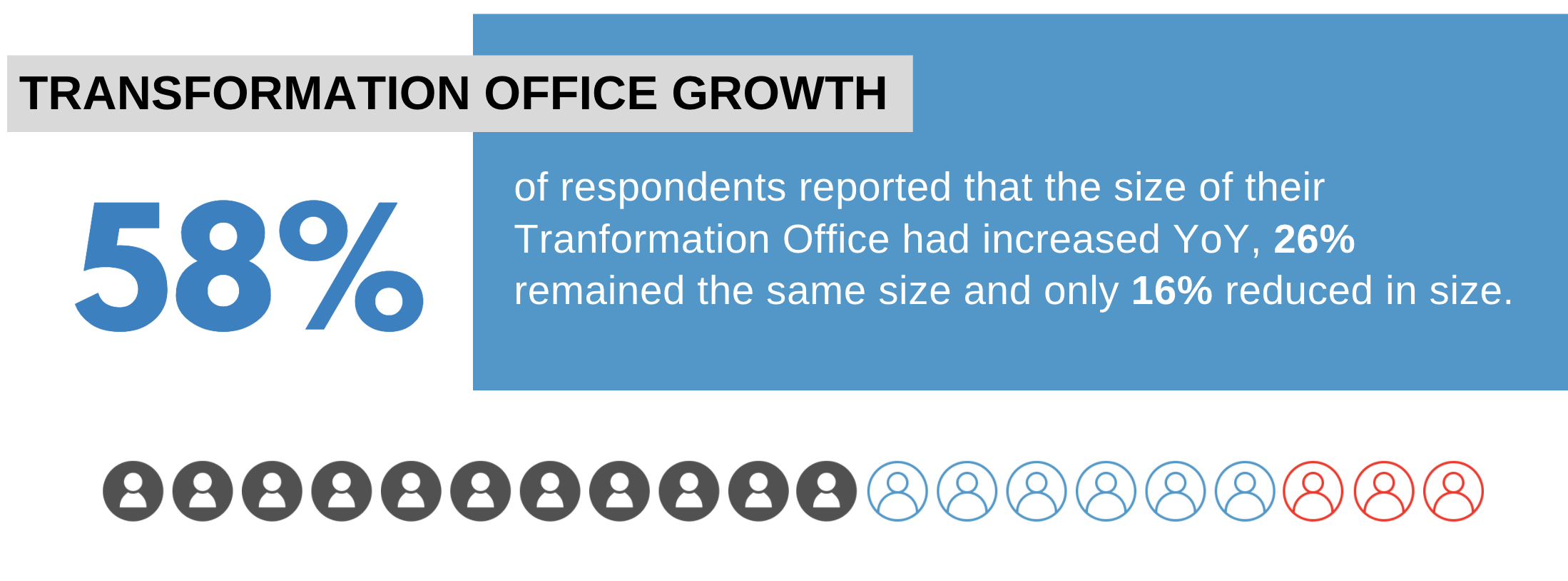
The average number of programs under management by the Transformation Office was 28, with 53% reporting an increase YoY.
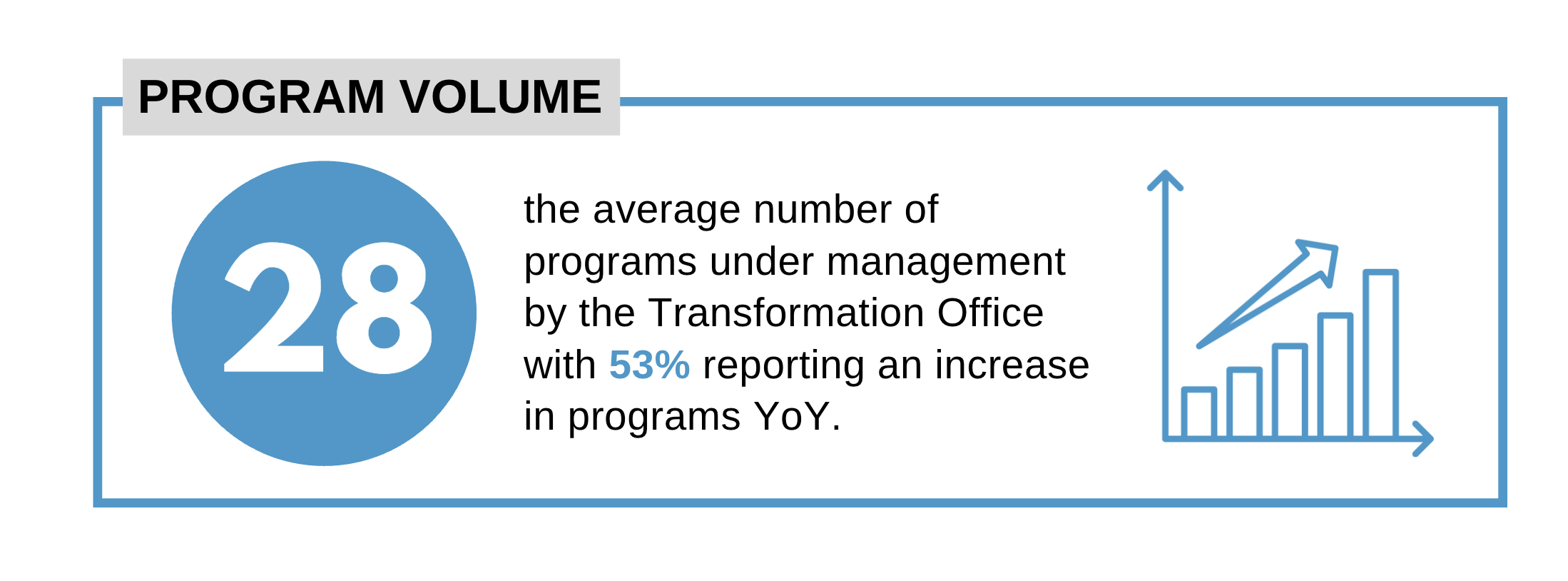
Respondents were asked to rank the top 5 KPI’s their organization tracks: Cost, Percentage Completion and Net Profit lead the way. 71.4% also noted that their organization tracks non-financial KPI’s such as NPS, Risk, Customer Experience, eNPS, and headcount reduction.
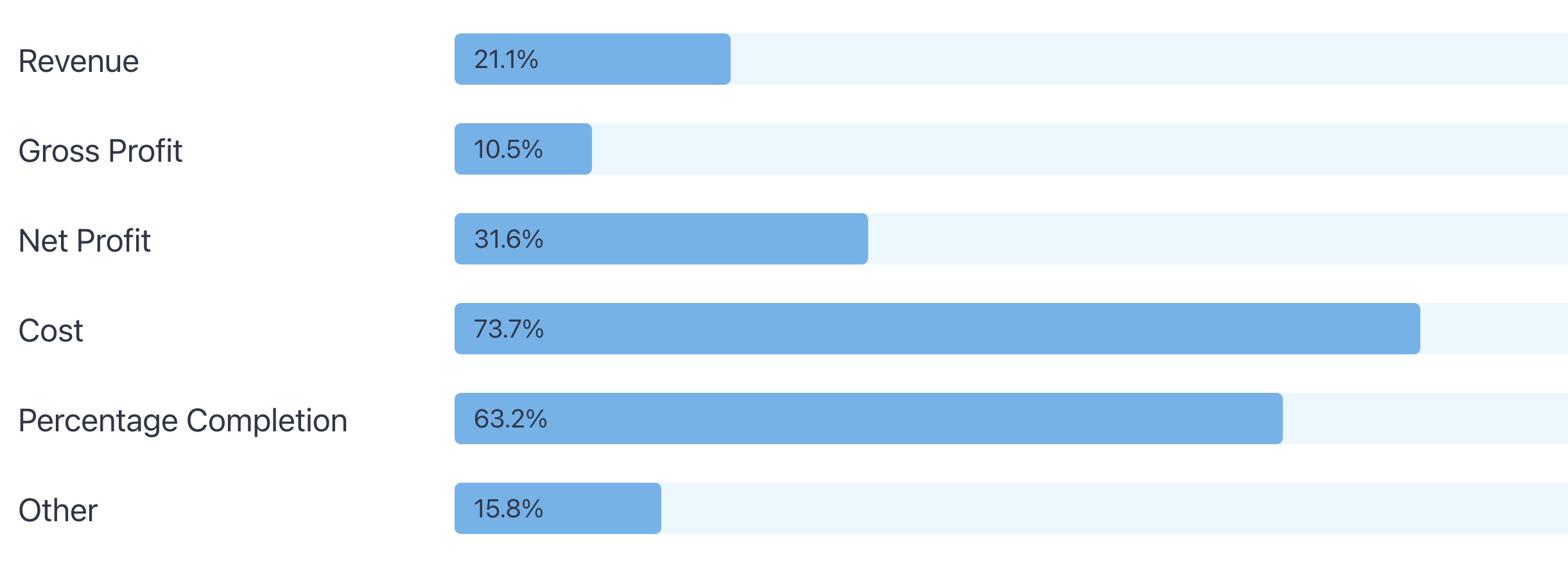
The Transformation Office Needs More Support to Effect Change
79% of respondents feel they do have the internal support of their organization needed to effect change. Of those that didn’t, 100% did not feel their leadership had the information required in order to make data-driven decisions despite having a weekly reporting cadence. This level of scrutiny, requiring significant preparation time and effort, appears to lead to a level of frustration for the Transformation Office and no doubt for those seeking to make data-driven decisions from potentially insufficient data. (See Technology Factor above)
77% of respondents reported that the pace of review has decreased or stayed the same, yet 42% of respondents still reported that they had too much to do and not enough resources.

Alarmingly, organizations on average spent 219 hours on reporting the status of programs with a range of as low as 30 hours and a high of 350 hours per reporting cycle. If we assume a monthly reporting cycle and the average cost per hour to be $100, then on average organizations are spending $262,800 per year on program reporting. If more organizations adopt a weekly reporting cadence, this cost potentially increases four-fold.
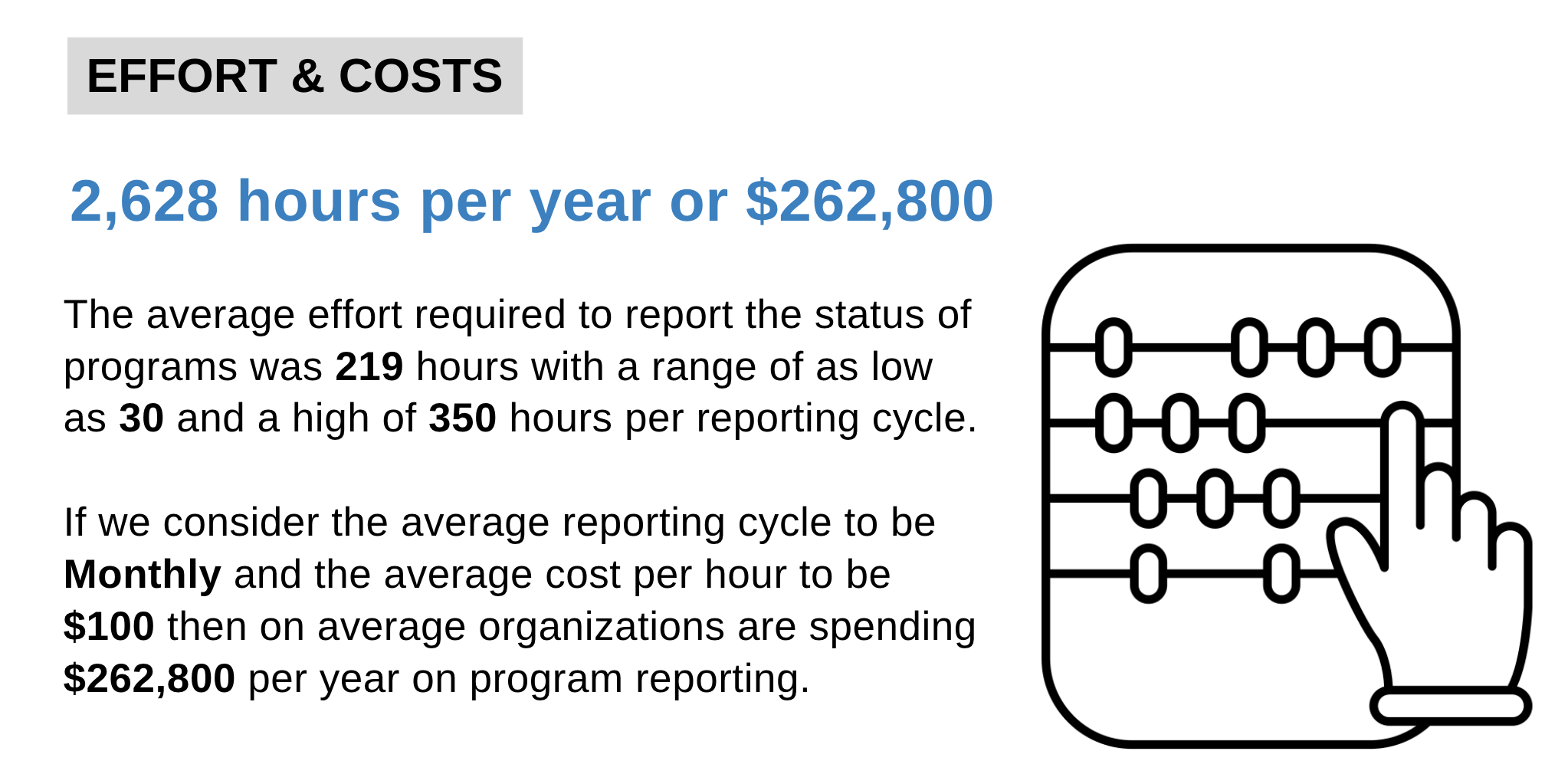
Summary:
This inaugural benchmarking study clearly identified correlations between Transformation success and the characteristics of the Strategy & Transformation Office. The relationship between Transformation success and the critical capabilities of visibility, agility and alignment were all present in the responses of those experiencing the most success.
The aim of this benchmarking study is to provide a point of comparison for Strategy & Transformation Leaders so that they may evaluate their own organization and understand the areas for improvement that will lead to future transformation excellence.
The data in this survey points to an overwhelming correlation between high visibility and data-driven decision-making enabled by weekly or monthly review cadence. The more agile an organization is, the more it can respond to changes in the operating environment. Agility, once again powered by visibility and transparency, means an organization can always be optimizing investments for optimum outcomes. The third and final critical capability identified in the survey is the alignment of the corporate objectives of the organization to the transformation efforts. Strong alignment of these elements ensures that the investments in transformation programs unlock the goals of the organization, allowing it to truly transform with excellence.
Shibumi is the leading transformation excellence software platform enabling organizations to improve agility, visibility, and alignment through our data-driven, value-focused platform. If your organization is serious about transformation excellence contact Shibumi today.
Interested to learn more about Shibumi?
Discover how Shibumi can help you drive transformation excellence within your organization?

